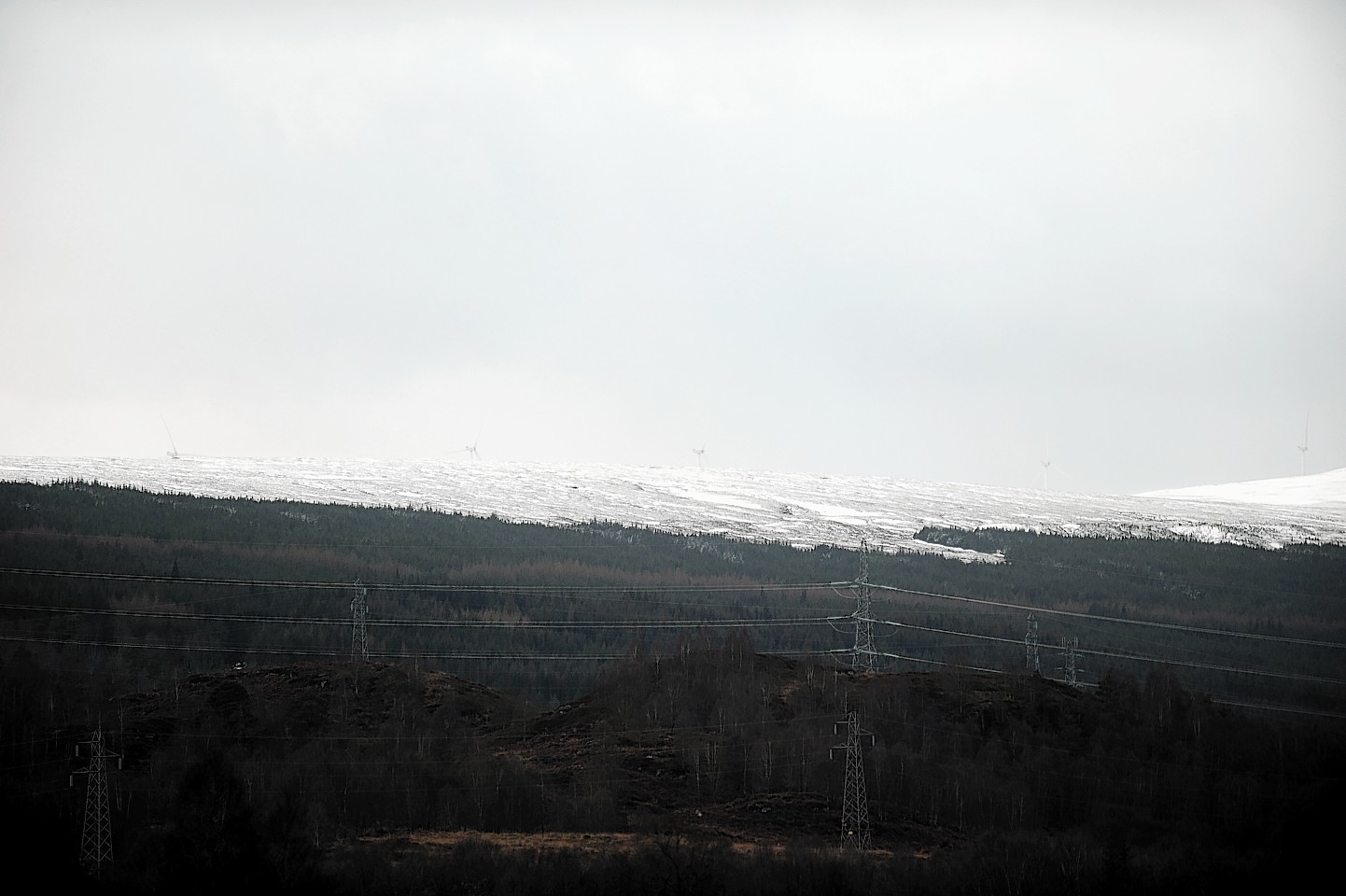A green energy company has been paid £7.5million – to switch off its turbines and stop producing electricity.
This year alone Falck Renewables Wind Ltd received £2.8million not to generate power on 77 separate occasions.
And the firm was under fire from politicians and campaigners last night as it emerged it wants to extend its Millennium development in the hills above Loch Ness.
Since it started producing electricity in June 2009, Falck has received £7.5million in “constraint payments” – money paid to energy companies to stop feeding power to the National Grid.
The company has now asked the Scottish Government for permission to add a further 10 turbines – which would be more than 430ft tall to their blade tips – to the 26 it already has on the Aberchalder and Achlain estates at Glenmoriston.
Highland Council’s head of planning and building standards, Ken McCorquodale, has recommended members to not object to the proposals, which councillors are due to discuss tomorrow.
Falck says the existing windfarm generates 65MW of power – enough to supply about 36,000 homes.
The extension would add another 35MW, providing power for about another 19,000 homes.
It is understood a development on the scale of the Millennium windfarm would earn £85 per MW per hour when it is operating – and £121 when it is not producing electricity,
Highlands and islands MSP Mary Scanlon said: “This application for an extension appears to defy logic.
“It doesn’t make any sense to build an extension to an existing windfarm where considerable constraint payments have been made.
“With no options for storage, it just doesn’t make sense.”
Anti-windfarm campaigner Stuart Young said: “It’s absolutely appalling that Highland Council planners are recommending approval when all this money is being spent and the power is not needed.”
He added that, if the additional 10 turbines had been in place from the beginning, the energy company would have received more than £11.5million in non-production payments, including more than £4million this year.
And he pointed out that constraint payments increased the price of electricity for both private and business customers.
Another Highland windfarm campaigner, Lyndsey Ward, said: “It seems ridiculous that they are applying for more turbines when they are being paid not to produce power on so many days with the ones that are there at the moment.
“The biggest disappointment is the cumulative impact of all the windfarms in the Highlands.
“But I’m also disappointed that this application for an extension is being determined by the government rather than locally.”
A new application for a 35MW windfarm would be determined by the local authority, but this application is being handled by the government because it is an extension to an existing development.
Falck project manager, Richard Dibley, said the extension would have “very minimal visual impact”.
And he pointed out that all forms of energy generators received constraint payments, not just windfarms.
He said: “National Grid contracts with supply companies to supply electricity on to the grid in a planned way.
“Sometimes power cannot be transmitted to where it is needed, usually due to congestion at one or more points on the transmission network, and National Grid needs to take action to balance out the network.
“National Grid equates this to occasionally using traffic lights to manage the flow of cars joining a motorway during a busy period. It wouldn’t be economic or sensible to build another parallel motorway so that there was never a traffic jam.
“Sometimes National Grid asks windfarms to shut down because they are the most flexible and cost-effective means of achieving balance on the grid.”

